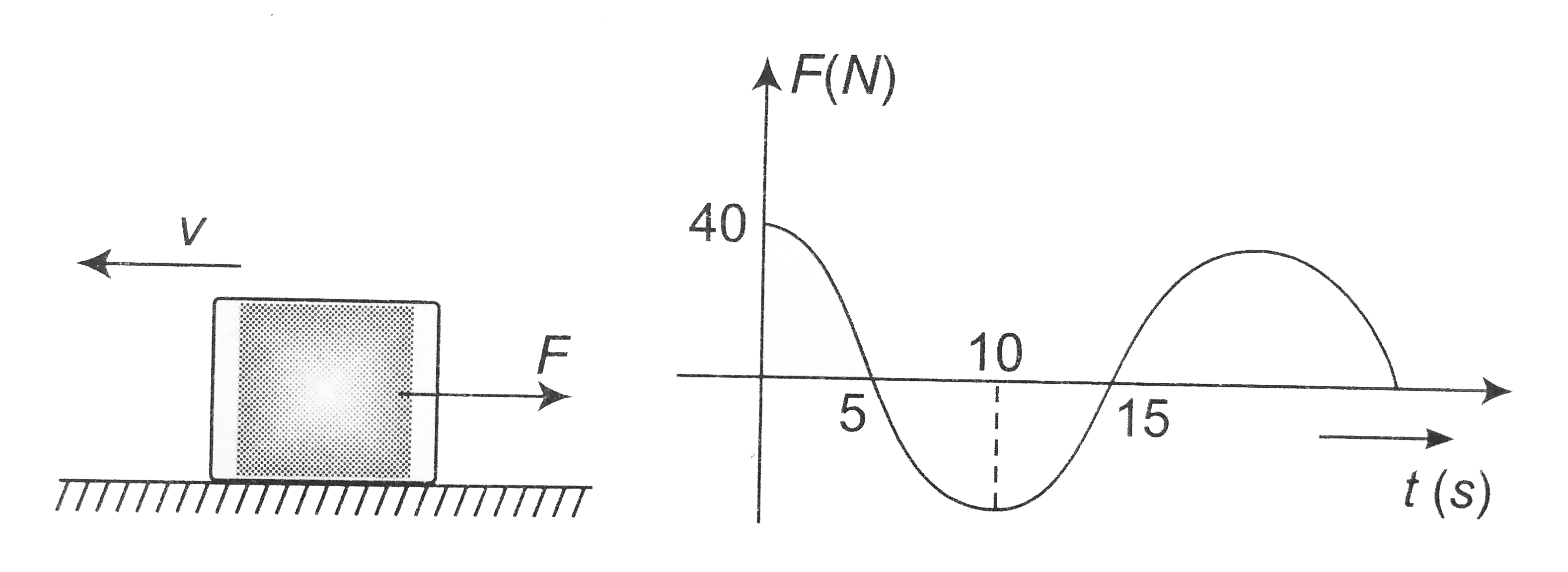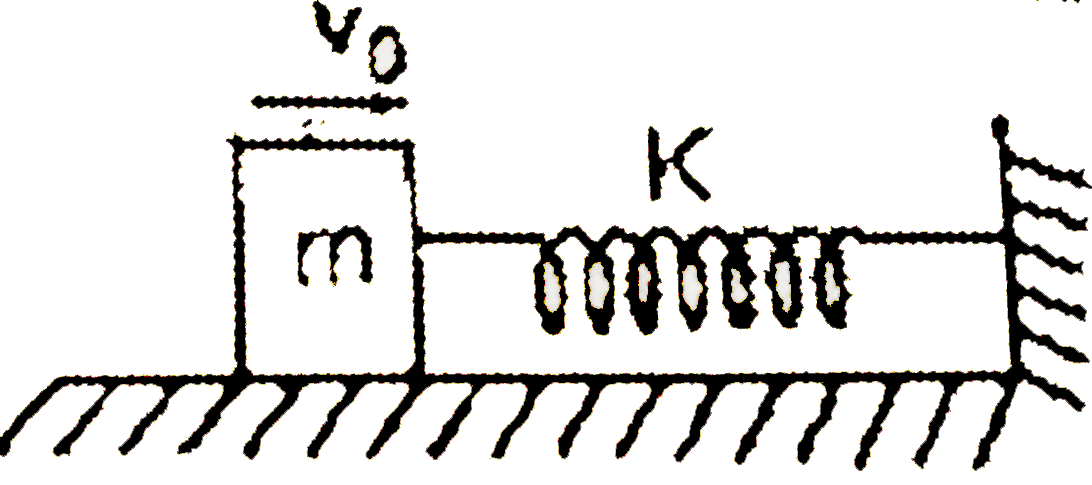
The block is given an initial velcoty v0 on smooth curved surface, Its speed when it reaches to B will be
v0
(v0+gh)(1)/(2)
(v0+2gh)(1)/(2)
none
The correct Answer is:B
By conservation of mechanical energy (taking ground as reference level)
KA=UA=KB+UB
12mv20+mgh=12mv2B+mgh2
vB=(v20+gh)12
Topper's Solved these Questions
Similar Questions
A block os mass m moves on as horizontal circle against the wall of a cylindrical room of radius R. The floor of the room onwhich the block moves is smoth but the friction coefficient between the wall and the block is μ. The block is given an initial speed v0. As a function of the speed v write a. the normal force by the wall on the block. b. thefrictional force by the wall and c. the tangential acceleration of the block. d. Integrate the tangential acceleration (dvdt=vdvds) to obtain the speed of the block after one revoluton.
View SolutionA ball B is suspended from a string of length l attached to a cart A, which may roll on a frictionless surface. Initially the cart is at rest and the ball is given a horizontal velocity v0. Determine
the maximum height reached by the ball.

View Solution
Knowledge Check
A block mass m moves on a horizontal circle against the wall of a cylinderical room of radius R. The floor of the room, on which the block moves, is smooth but the friction coefficient between the wall and the block is μ. The block is given an initial speed V0. the power developed by the resultant force acting on the block as a function of distance travelled s is
Aμm30Re−3sμBμmV30Re−3μsRCμmV30RDμmV30Re−3sRIn a two block system an initial velocity v0 with respect to ground is given to block A
 Athe momentum of block A is not conservedBthe momentum of system of blocks A and B is conservedCthe increase in momentum of B is equal to the decrease in momentum of block ADAll of the above
Athe momentum of block A is not conservedBthe momentum of system of blocks A and B is conservedCthe increase in momentum of B is equal to the decrease in momentum of block ADAll of the aboveA 15kg block is initially moving along a smooth horizontal surface with a speed of v=4m/s to the left. It is acted by a force F , which varies in the manner shown. Determine the velocity of the block at t=15 seconds.
 A12.5m/sB8.5m/sC20m/sD9.5m/s
A12.5m/sB8.5m/sC20m/sD9.5m/s
A block of mass m is given velocity v0 on a rough horizontal surface. After traveling a distance d. Its speed becomes (v0)/(2). Find the work done against friction. The work donw by friction and the coefficient of friction.
View SolutionA block of mass m moving with a velocity v0 on a smooth horizontal surface strikes and compresses a spring ofstiffuess k till mass coines to rest as shown in the figure. This phenomenon is observed by two observers :
(a) Standing on the horizontal surface
(b) standing on the block

To an observer B, when the block is compressing the spring :
View SolutionA block weighing 40N travels down a smooth fixed curved track AB joined to a rough horizontal surface (figure). The rough surface has a friction coefficient of 0.10 with the block. If the block starts slipping on the track from a point 2.0m above the horizontal surface, the distance it will move on the rough surface is :−

View SolutionA long block A is at rest on a smooth horizontal surface. A small block B whose mass is half of mass of A is placed on A at one end and is given an initial velocity u as shown in figure. The coefficient of friction between the blocks is μ.

View SolutionA block weighing 10 N travels down a smooth curved track AB joined to a rough horizontal surface (figure). The rough surface has a friction coefficient of 0.20 with the block. If the block is released from rest on the track from a point 1.0 m above the horizontal surface, the distance it will move on the rough surface is

View Solution